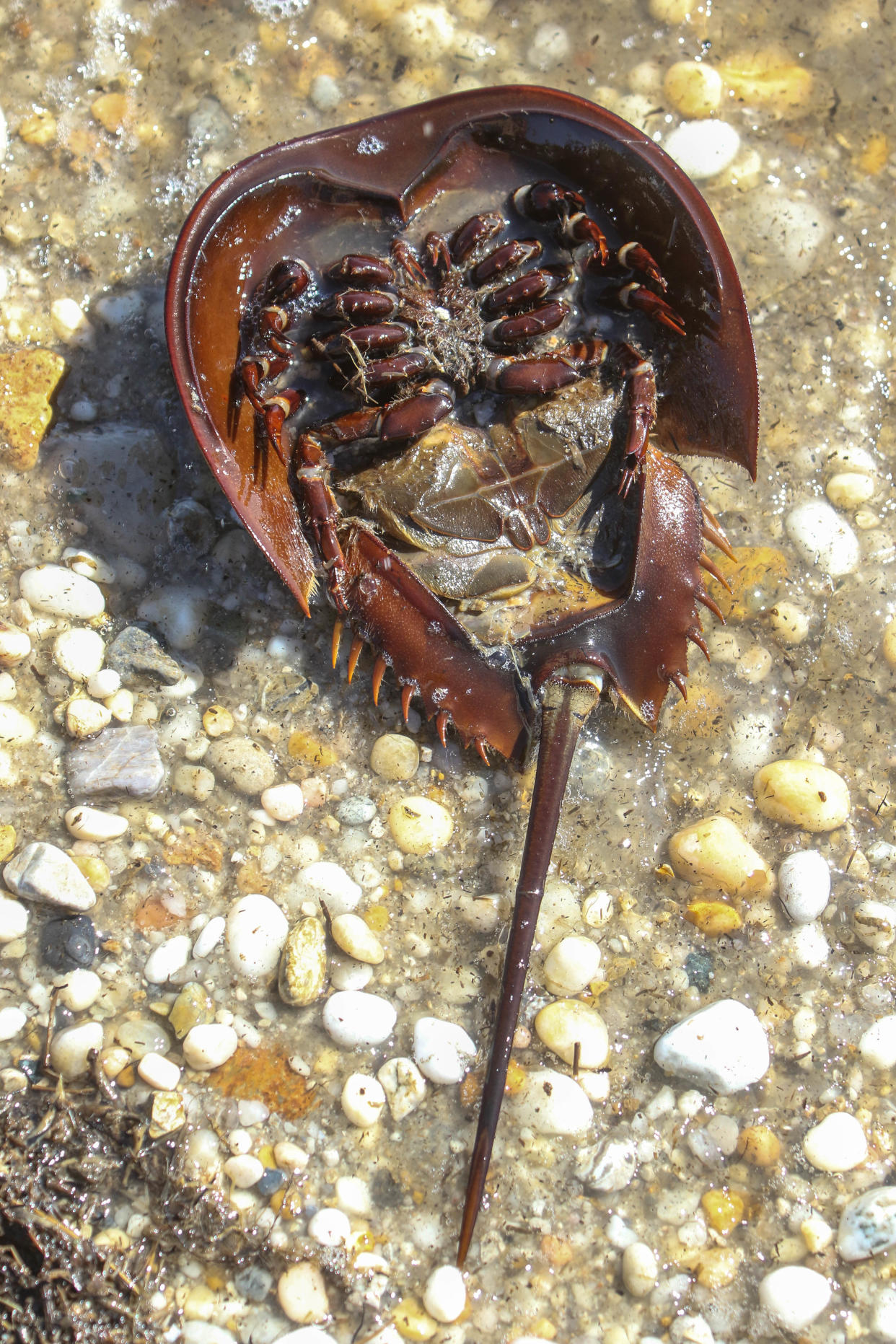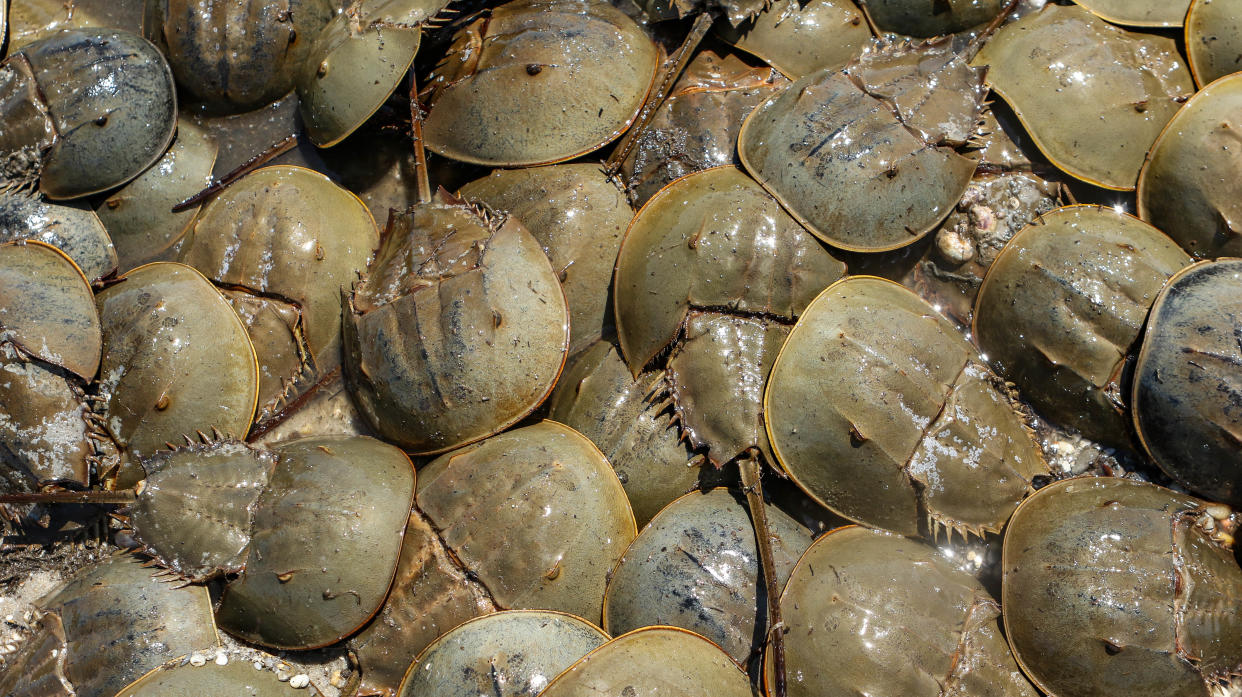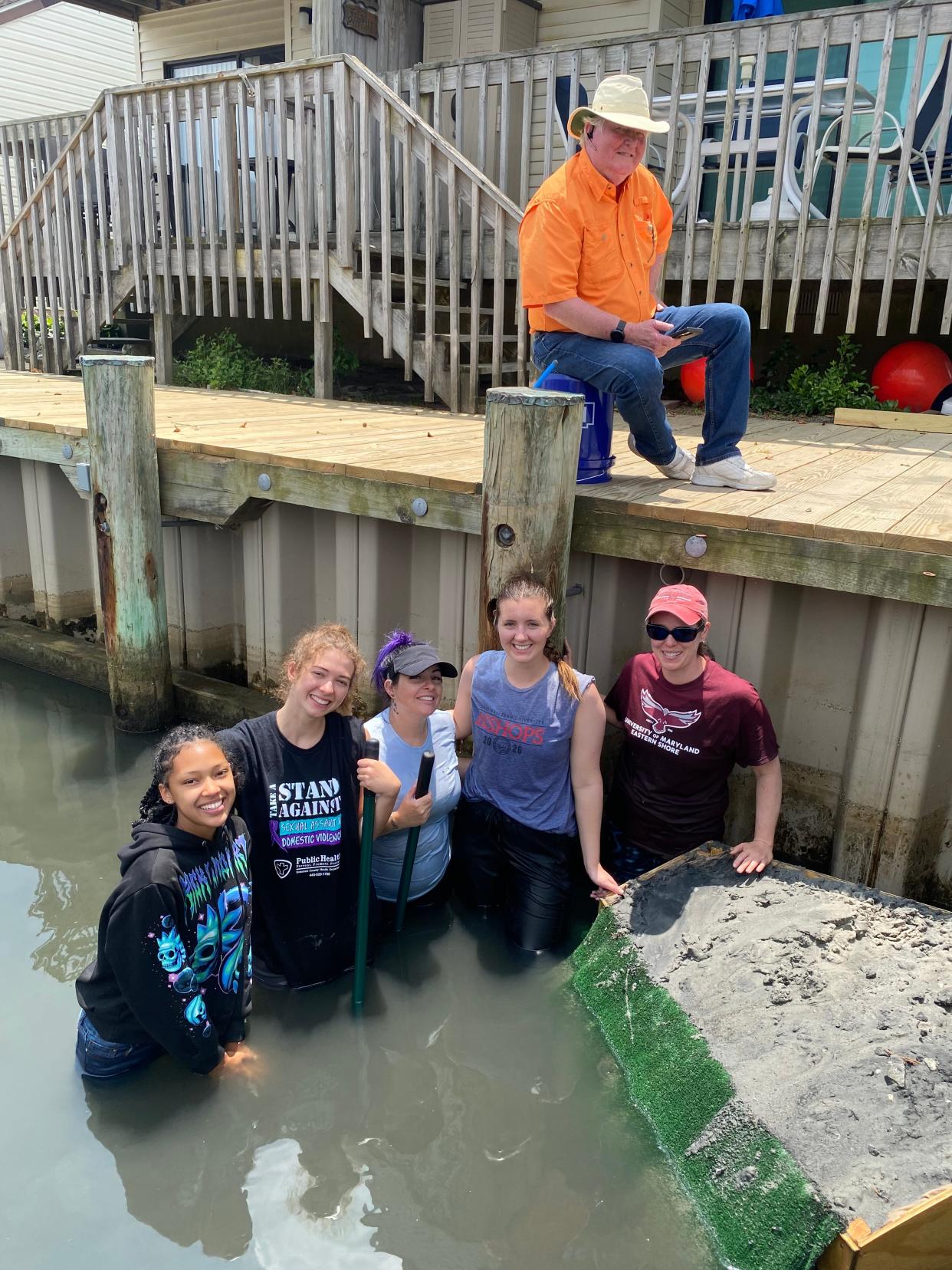Horseshoe crabs, which have suffered steep declines, get big new endangered species push
A petition to the National Oceanic and Atmospheric Administration Fisheries to extend endangered species protection to horseshoe crabs is gaining traction, with a bevy of organizations now backing the plan.
The Center for Biological Diversity, which was joined by 22 other environmental advocacy groups, claims horseshoe crab populations have steeply declined in recent decades due to overharvesting and habitat loss. Horseshoe crabs are brown, body-armored arthropods with 10 eyes and a long, spiked tail. Their prehistoric appearance belies that they are completely harmless to humans.
Each spring along the Atlantic and Gulf coasts, horseshoe crabs lay their eggs in massive beach spawning events.
“We’re wiping out one of the world’s oldest and toughest creatures. These living fossils urgently need Endangered Species Act protection. Horseshoe crabs have saved countless human lives, and now we should return the favor," said Will Harlan, a senior scientist at the Center for Biological Diversity.

According to NOAA, petitioners will be required to notify each state wildlife agency in which the species occurs at least 30 days before submitting the petition. This change will provide states an opportunity to submit pertinent information on petitioned species.
Petitions will be limited to only one species per petition, but they may still address any members of a single species as defined by the Endangered Species Act, including the full species and one or more subspecies or varieties. For vertebrate species, this includes one or more distinct population segments.
After receiving the petition, NOAA will evaluate whether it presents substantial information that the petitioned action may be warranted. Within 90 days, to the maximum extent practicable, they publish the findings and their decision.
More on crabs saved from harvesting Horseshoe crabs lifeblood for watermen and health care, to get reprieve from harvesting
Horseshoe crabs and the medical industry
Federal Food and Drug Administration data notes that an estimated 30% of a crab's blood is drained before they are returned to the ocean. The removed blood is used to produce a substance called limulus amebocyte lysate, or LAL, which scientists use to test for toxic substances called endotoxins in intravenous drugs.
Horseshoe crab blood harvests have virtually doubled since 2017, with nearly 1 million horseshoe crabs harvested for their blood in 2022. A synthetic alternative to horseshoe crab blood tests are already being used in Europe, but companies in the U.S. have shown reluctance to using the alternative.
“The continued reliance on horseshoe crab blood by pharmaceutical manufacturers has led to a rapid decrease in the population of this important species. Fortunately, there are non-animal alternatives that can replace the use of horseshoe crab blood and help protect these amazing animals from further overharvest,” said Kathleen Conlee, vice president for Animal Research Issues at the Humane Society of the United States.
The synthetic alternative, or recombinant Factor C, was developed in the 1990s, with many independent labs able to recreate the substance. The main question for many biomedical companies was whether the synthetic alternative was safe, prompting many companies to speculate finding that out was going to be a costly endeavor.
Federal laws like The Food, Drug, and Cosmetics Act and the Animal Welfare Act attempted to establish humane practices in animal testing within the United States. But those laws, while protecting mammals, do not extend to crab populations.
More on other fisheries Oysters enjoy 'prolific' year all around Chesapeake Bay. Here's what to know.
As horseshoe crabs have declined, so have other species

The center contends spawning beaches across their entire range "are being destroyed by development, shoreline hardening, and sea-level rise," they said in statement.
They further argue as horseshoe crabs have declined, so have other species, such as endangered sea turtles, fish and birds. Most notably, the rufa red knot, a shorebird species that feeds on horseshoe crab eggs during its 19,000-mile migration from South America to the Arctic, was listed as threatened under the Endangered Species Act in 2015.
The listing decision cited the horseshoe crab harvest as one of the contributing factors to the red knot’s decline.
“Horseshoe crab eggs are incredibly nutrient dense, sustaining the federally threatened red knot on their long migratory journey,” said Steve Holmer, vice president of policy at American Bird Conservancy. “Greater protection of the horseshoe crab is needed to fully recover the red knot, as well as conserve other shorebird species, such as the ruddy turnstone and semipalmated sandpiper.”
Moore touts anti-poverty plan: Maryland Gov. Moore visits Eastern Shore to pitch anti-poverty legislation, enlist support
UMES joins in effort to boost horseshoe crabs in Ocean City

In July 2023, researchers and students at the University of Maryland Eastern Shore built artificial beach platforms in Ocean City to give spawning females a location to deposit their eggs.
The home plate-shaped platform measures a compact 4 feet by 2 feet by 5 feet. Once it is filled with sand and soaked, it quickly becomes an ideal spot for the species. While there was only one built thus far in the canal in 2023, it has already proven to attract the crabs despite eggs not yet found on the structure.
For the countless horseshoe crabs that trek up Ocean City's 94th Street canal, a successful spawning period could be the difference between sustaining or losing the species entirely. Construction of high-walled bulkheads and development along the shore is quickly taking away large swaths of horseshoe crab territory.
Joining the Center for Biological Diversity, the Humane Society of the United States and American Bird Conservancy in petitioning for the horseshoe crab are the American Littoral Society, New Jersey Audubon, Delaware Audubon, Delaware Ornithological Society, Healthy Gulf, Humane Society Legislative Fund, League of Women Voters of New Jersey, Maryland Ornithological Society, Revive & Restore, One Hundred Miles, The Safina Center, Wild Cumberland, Forest Keeper, Coastal Expeditions Foundation, Mobile Baykeeper, Shark River Cleanup Coalition, Southeastern Massachusetts Pine Barrens Alliance, Save Coastal Wildlife, New Jersey League of Conservation Voters and the Delaware Riverkeeper Network.
Maryland's sludge debate: 'This isn't farming, it's dumping.' Debate about what do with sludge rages on in Maryland
This article originally appeared on Salisbury Daily Times: Horseshoe crabs, key for medical industry, get endangered species push
